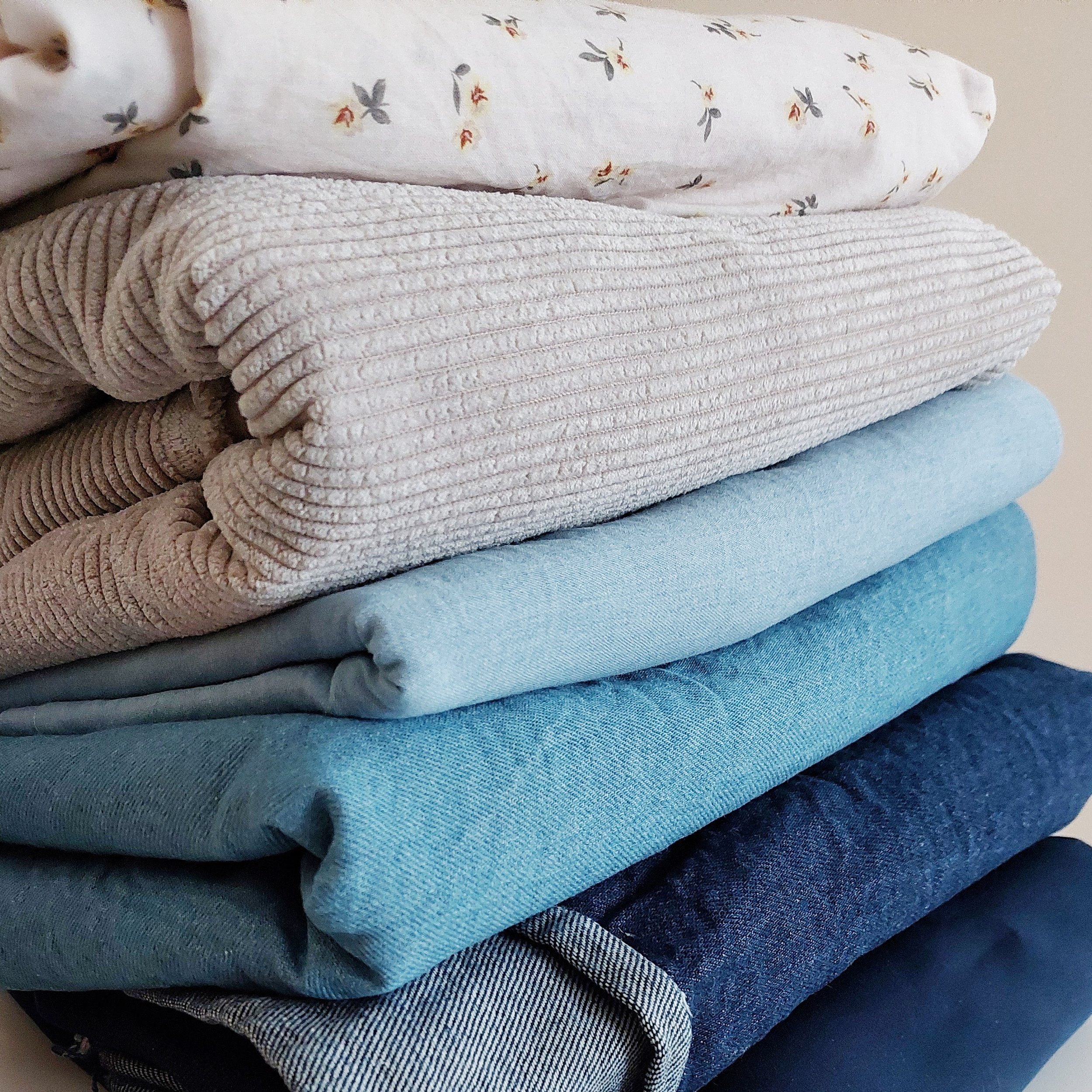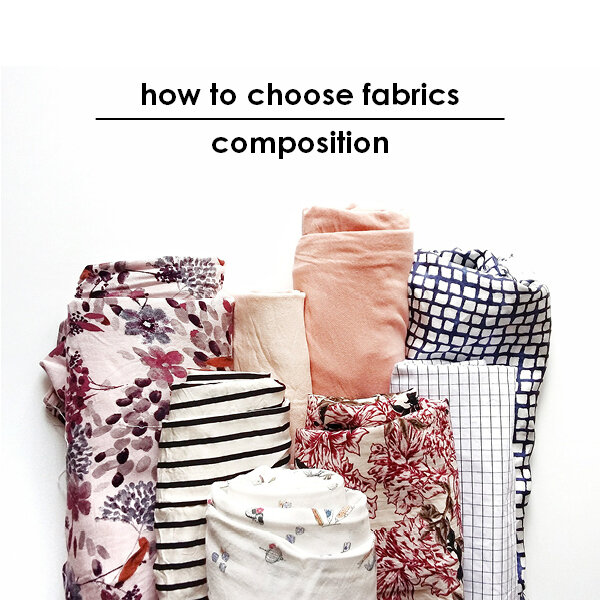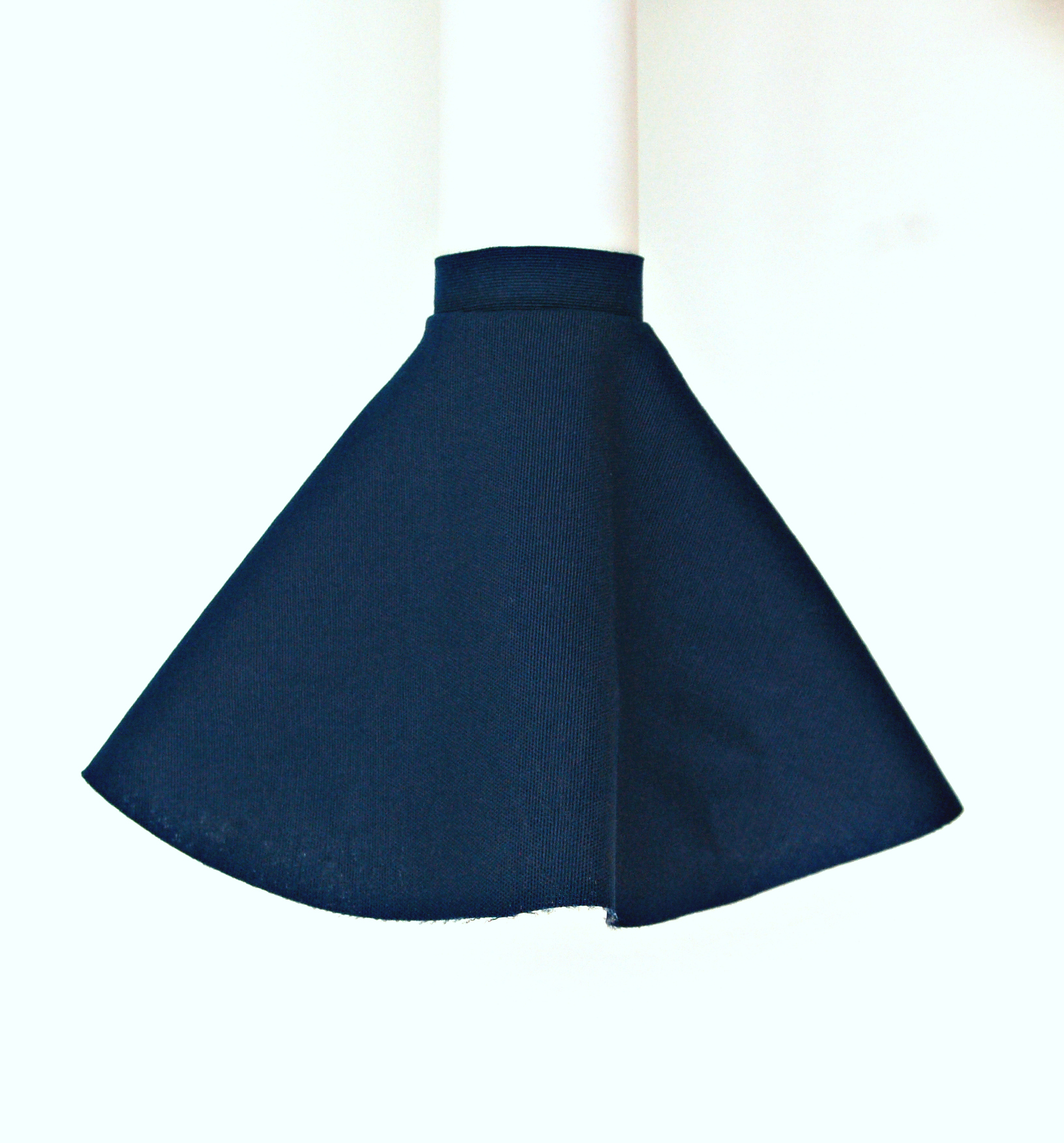I’m going to put you some examples, maybe it can clear out some cases. So if you want to make a summer blouse and you are someone who sweats a lot or you live in a very hot climate, I’d say that natural fibers are a good choice for you, they will let your skin breathe and even when you sweat you won’t smell bad after a second. Then again if you will be wearing your blouse in a hot climate and you are going to an event where you just can’t have your sweaty armpits to be seen (happens to me quite a lot here in Spain…) I’d make a sleeveless top out of a fabric made of synthetic fibers, this way your armpits can have their “air”, hehe, but there won’t be visible sweat stains. Synthetic fibers are also great when you travel, you can pack a light suitcase as you can wash and dry this type of blouses in no time.
When you want to sew a winter coat and you live in a cold climate or you are very cold all the time (me!) I’d suggest using wool fabrics, they are very warm and help to regulate the temperature so you won’t sweat much even when you have to be outside and then use the transport where it’s hot etc. Also wool can be pressed amazingly well and when you sew a coat it’s so much easier to get neat finishings when you work with wool. But of course there are synthetic fibers that can help with keeping warm too, you can probably use an interlining made out of special synthetic fibers that will give you the extra warmth you need.
By the way, here’s one more thing that I really like about wool both in fabric and in knitted garments. Many people are afraid of wool because they think it needs a lot of special care, you can’t throw garments made of wool into the washing machine etc (although there are already superwash yarns available). But for me it’s the opposite, wool is an amazing material that can be left out of the closet to “breathe” (I usually leave my wool sweaters and coats out on the terrace for a day after wearing them) and all the bad odours will disappear. If you get stains on your garment you can also just spot clean and you don’t need to wash the entire garment. So as wool lets your skin breathe and you won’t sweat + caring for it is not so complicated, for me it’s just a fiber of dreams!
Back to examples, also think about how and exactly when you will wear the garment. My mom made my sister a silk dress for her graduation, it was a special event and silk truly is a special fabric. The thing is that she had to sit on the stage and everyone was called individually to get their diplomas...and what happens to natural fibers when you sit down for a while? Yes, there are these wrinkles that are formed and they will be very visible especially on plain fabrics (prints can really help with hiding the wrinkles!). So maybe it would have been a better idea to use a fabric that didn’t wrinkle for that special event. Well, it’s a lesson learned at least!
Voy a usar algunos ejemplos, quizás eso ayuda aclarar cosas. Imaginamos que quieres coser una blusa de verano y sabes que sudas bastante o que vives en un clima muy cálido. Yo diría que las fibras naturales son una buena elección para ti porque dejan que tu piel transpire e incluso si sudas no vas a oler mal después de dos segundos. Sin embargo si vives en un clima muy cálido y sabes que quieres ponerte tu blusa para ir a algún evento especial donde obviamente no quieres que se vean marcas de sudor (me pasa mucho eso aquí en España…), lo que puedes hacer es coser la blusa con un patrón sin mangas usando tejidos sintéticos. De esa manera tus axilas estarán “al aire” y la tela no va dejar que se vean las marcas de sudor. Las fibras sintéticas también son muy cómodas cuando viajas, puedes hacer una maleta pequeña porque tejidos así se secan muy rápido al lavarlos.
Si quieres coser un abrigo de invierno y vives en un sitio frío o eres muy friolera (yo!) recomendaría usar tejidos de lana, son muy cálidos y ayudan a tu cuerpo para poder regular la temperatura así que no sudas incluso si tienes que estar en la calle con el frío y luego usar transporte donde ponen mucho más calefacción. Además lana se plancha increíblemente bien y cuando coses un abrigo es mucho más fácil conseguir acabados bonitos. Por supuesto hay también tejidos sintéticos que ayudan con dar calor, probablemente puedes usarlas para forrar tus prendas de invierno.
Por cierto, hay una cosa más sobre lana que me encanta y va tanto sobre las telas de lana como para los jerseys tejidos a mano/comprados. Muchas veces la gente tiene miedo a la lana porque tiene fama de difícil cuidado, no se puede lavar a máquina etc (aunque ya existen lanas superwash para eso también). Pues nada más lejos, la lana me parece un material increíble porque si dejas la prenda a airear (yo mis jerseys y abrigos los dejo en la terraza al aire libre un día después de ponermelos) se queda como nuevo, no hay olores ni nada similar. Si manchas la prenda de algo puedes limpiar el sitio concreto, no hace falta lavarlo todo. Así que entre que lana deja que tu piel transpire y no te hace sudar y también su cuidado es más fácil de lo que parece...a mí me parece un material super agradecido!
De vuelta a los ejemplos, también piensa exactamente cómo y cuándo vas a ponerte esa prenda. Mi madre hizo a mi hermana un vestido de seda para su graduación, fue un vestido especial y la seda desde luego es un tejido especial. Lo que pasa es que en este evento los alumnos tenían que sentarse en el escenario mientras les llamaban para recoger su título...y qué pasa a los tejidos naturales cuando te sientas un rato? Sí, salen arrugas y especialmente en telas lisas se notan un montón (estampados por cierto ayudan bastante en camuflar arrugas!). Así que quizás hubiera sido mejor para este tipo de evento usar para la falda una tela sintética para evitar un problema así...en fin, algo nuevo aprendimos!

























































